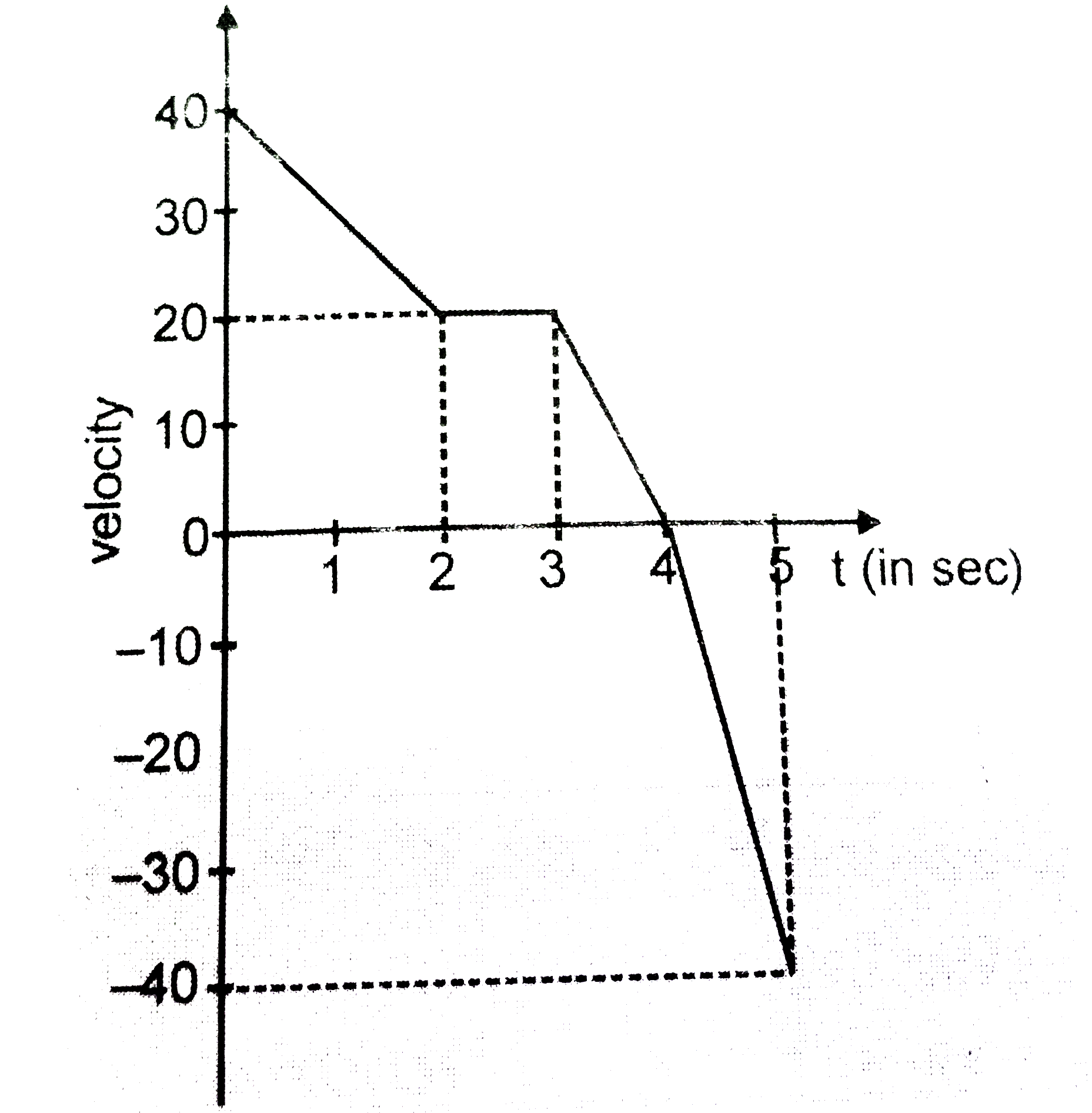Two particles starts simultaneously from a point O and move along line OP and OQ, one with a uniform velocity 10m/s and other from rest with a constant acceleration 5m/s2 respectively. Line OP makes an angle 37∘ with the line OQ. Find the time at which they appear to each other moving at minimum speed?
The correct Answer is:t=1.6 s
To solve the problem step by step, we need to analyze the motion of both particles and determine the time at which they appear to be moving at minimum speed relative to each other.
1. Understand the Motion of the Particles:
- Particle A moves along line OP with a uniform velocity of 10m/s.
- Particle B moves along line OQ from rest with a constant acceleration of 5m/s2.
2. Set Up the Coordinate System:
- Let point O be the origin of our coordinate system.
- Line OP makes an angle of 37∘ with line OQ.
3. Break Down the Velocity of Particle A:
- The velocity of particle A can be broken down into components:
- VAx=10cos(37∘)
- VAy=10sin(37∘)
- Using the trigonometric values:
- cos(37∘)≈0.8
- sin(37∘)≈0.6
- Therefore:
- VAx=10×0.8=8m/s
- VAy=10×0.6=6m/s
4. Determine the Motion of Particle B:
- Since particle B starts from rest, its initial velocity u=0.
- The acceleration a=5m/s2.
- The velocity of particle B after time t is given by:
VB=u+at=0+5t=5tm/s
5. Relative Velocity:
- To find when they appear to be moving at minimum speed relative to each other, we consider the relative velocity of particle B with respect to particle A.
- The relative velocity in the x-direction (assuming right is positive) is:
Vrel=VB−VAx=5t−8
6. Setting Relative Velocity to Zero:
- To find the time when they appear to be moving at minimum speed, we set the relative velocity to zero:
5t−8=0
- Solving for t:
5t=8⟹t=85=1.6seconds
Final Answer:
The time at which the two particles appear to be moving at minimum speed relative to each other is t=1.6seconds.
- Particle A moves along line OP with a uniform velocity of 10m/s.
- Particle B moves along line OQ from rest with a constant acceleration of 5m/s2.
- Let point O be the origin of our coordinate system.
- Line OP makes an angle of 37∘ with line OQ.
- The velocity of particle A can be broken down into components:
- VAx=10cos(37∘)
- VAy=10sin(37∘)
- Using the trigonometric values:
- cos(37∘)≈0.8
- sin(37∘)≈0.6
- Therefore:
- VAx=10×0.8=8m/s
- VAy=10×0.6=6m/s
- Since particle B starts from rest, its initial velocity u=0.
- The acceleration a=5m/s2.
- The velocity of particle B after time t is given by:
VB=u+at=0+5t=5tm/s
- To find when they appear to be moving at minimum speed relative to each other, we consider the relative velocity of particle B with respect to particle A.
- The relative velocity in the x-direction (assuming right is positive) is:
Vrel=VB−VAx=5t−8
- To find the time when they appear to be moving at minimum speed, we set the relative velocity to zero:
5t−8=0
- Solving for t:
5t=8⟹t=85=1.6seconds
The time at which the two particles appear to be moving at minimum speed relative to each other is t=1.6seconds.
Topper's Solved these Questions
- KINEMATICS-2DBook:ALLENChapter:KINEMATICS-2DExercise:Exercise (O-1)
Explore 40 Videos
- KINEMATICS-2DBook:ALLENChapter:KINEMATICS-2DExercise:Exercise (O-2)
Explore 46 Videos
- KINEMATICS-2DBook:ALLENChapter:KINEMATICS-2DExercise:Exercise (S-1)
Explore 30 Videos
- GRAVITATIONBook:ALLENChapter:GRAVITATIONExercise:EXERCISE 4
Explore 9 Videos
- MOTION IN A PALNEBook:ALLENChapter:MOTION IN A PALNEExercise:SOLVED EXAMPLE
Explore 28 Videos
Similar Questions
A particle is projected with a velocity 10 m//s at an angle 37∘ to the horizontal. Find the location at which the particle is at a height 1 m from point of projection.
View SolutionA particle of mass 2kg starts moving in a straight line with an initial velocity of 2m/s at a constant acceleration of 2m/s2. Then rate of change of kinetic energy.
View SolutionTwo particles A and B are initially 40mapart, A is behind B. Particle A is moving with uniform velocity of 10ms−1 towared B. Particle B starts moving away from A with constant acceleration of 2ms−1.
The time which there is a minimum distance between the two is .
View SolutionA particle starts motion from rest and moves along a straight line. Its velocity-time graph is shown. Find out speed of particle at t=2s and at t=3s.

View SolutionA particle starting from rest moves along a straight line with constant acceleration for this velocity displacement graph will have the form-
View SolutionA body starting from rest is moving with a uniform acceleration of 8ms2. Then the distance travelled by it in 5th second will be
View SolutionA particle starts from rest and moves with an acceleration of a={2+|t−2|}m/s2 The velocity of the particle at t=4 sec is
View SolutionA particle starts from rest and moves with an acceleration of a={2+|t−2|}m/s2 The velocity of the particle at t=4 sec is
View SolutionTwo bikes AandB start from a point. A moves with uniform speed 40m/sandB starts from rest with uniform acceleration 2m/s2. If B starts at t=10 and A starts from the same point at t=10s, then the time during the journey in which A was ahead of B is :
View SolutionTwo bikes AandB start from a point. A moves with uniform speed 40m/sandB starts from rest with uniform acceleration 2m/s2. If B starts at t=10 and A starts from the same point at t=10s, then the time during the journey in which A was ahead of B is :
View Solution
